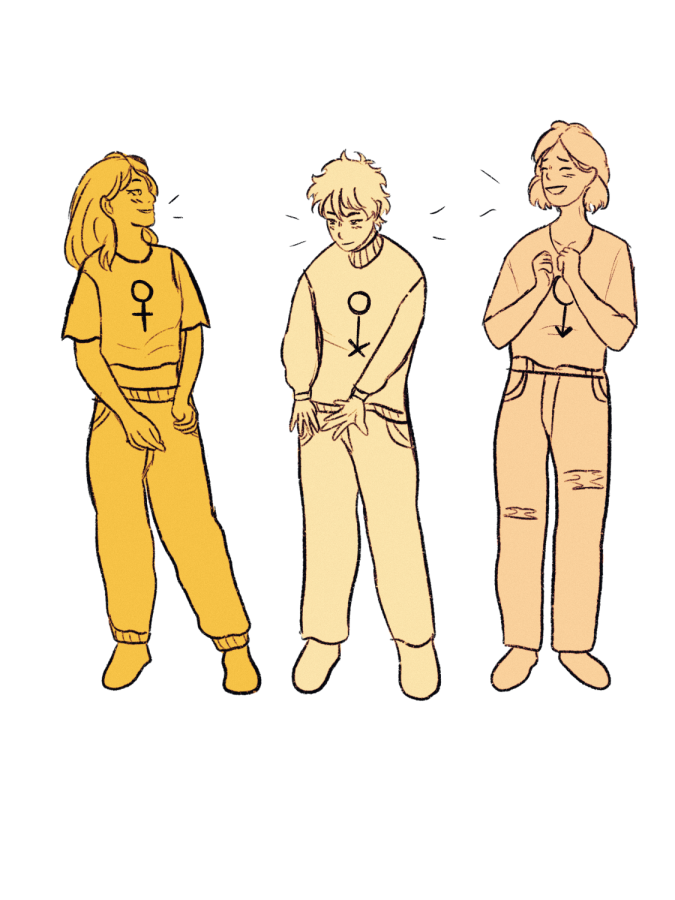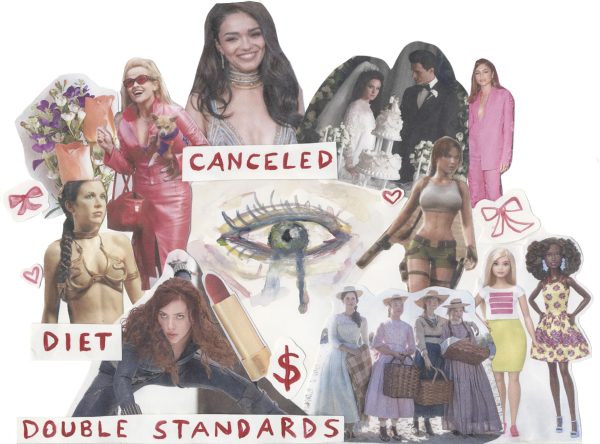Heteronormativity
Heteronirmativity has been and is still a prevalent ideology in our society that plays a very big part in how we’re seen as people, our roles and how we’re treated based on these expectations. But, we need to realize the harmful effects of this way of thinking on our peers.
December 1, 2020
Today, we recognize some genders are not exclusively male or female. There are people somewhere in between, a mixture of both, or outside of the traditional binary system. Nonbinary means there are other possibilities for people to identify as outside of the binary gender spectrum. It is the opposite of heteronormativity.
Gender is how you perceive yourself. It may be different from the sex you were born with. Alienation and judgment from others affect people negatively. When society creates a heteronormative gendered box, anyone outside of the box is abnormal. It can be detrimental to them and put them at risk for depression and suicide.
For students, this type of viewpoint can affect the atmosphere on campus and in the classroom. LGBTQ students should be accepted, and their gender and orientations normalized. People are who they are, and each person is unique and different. There is no need for a rigid gender box that ultimately separates us since we are born equal human beings.
Adding LGBTQ normalcy in the curriculum and on-campus would lower the detrimental effects of heteronormativity and be inclusive for all students.
The Southern Poverty Law Center states, “Creating an LGBTQ-inclusive classroom culture begins with a readiness to answer questions or facilitate an appropriate conversation around LGBTQ issues.” Being willing to learn and use necessary terms and vocabulary is crucial for understanding. Administrators and educators’ messages directly affect the community at school. It is essential to feel comfortable, safe, and understood in your learning environment. “So much of our coun- try’s history revolves around continuous discrimination against so many different identities, and I feel it is my responsibility to truly emphasize how we need to live in a culture of equality, love, peace, and truly respecting our fellow humans,”
Humanities instructor Drew Zailik said. Laguna Blanca is making it a priority to understand and normalize everyone. “We have to be willing to examine how structures in place now may be built on underlying principles or assumptions that are not truly inclusive,” Head of School Rob Hereford said. DEI coordinator Ursula Chan heads the DEI task force whose mission is to focus on diversity, equity, and inclusion to ensure inclusivity. She believes that “implementing histories of gender expression, gay liberation, and focusing on LGBTQIA+ issues would better inform our students, and make our students who are part of that community feel represented in their education.” “Of course, this does not have to stop at histories; we can engage with fictional stories that have meaningful queer representation,” Chan said.
The most respectful thing you can do is ask what pronouns another person uses. That’s how we can correctly gender people and avoid giving them dysphoria or making them uncomfortable. You can say, “Hi there, I use they/ them or he/him or she/her pronouns.” While this may sound odd since it’s not yet widely accepted, it’s a common courtesy that hopefully more people will accept and use because it validates identities. Adding pronouns normalizes things rather than making it a big deal.
Making an effort to ask for pronouns positively impacts connections and makes everyone feel good that they are being considered and seen. Drama director Dana Caldwell and social science teacher Al Silva added their pronouns to their Zoom names. It’s akin to asking, “My name is Audrey. What’s your name?”
Sky Límon from Santa Barbara Pacific Pride adds, “We live in a binary world where being cis and heterosexual is normal.”
Another way to normalize the environment is to create a safe space for students to be themselves. Having some LGBTQ content in the lesson/curriculum, supporting PRIDE week, discussing LGBTQ issues, and having teachers and students introduce themselves using their pronouns would reassure non-binary and trans students.
For LGBTQ students, something like a dress code at school can be troubling. There are automatic binary gender standards with clothing and dress. Dress codes for special events like prom, special events, and graduation are very gendered in what students are “allowed” to wear. For example, last year, girls were supposed to wear dresses, and boys were supposed to wear blazers or suits at the eighth-grade graduation. While this is a traditional way of dressing for formal graduations., it can be restrictive. A gender-inclusive dress code is a good policy for everyone to embrace.
Today, we are embracing changes across the country regarding gender expression and the acceptance of the LGBTQ community. “As I think about it, there is probably language I fall back on when talking about families that is not as inclusive as it should be,” Hereford said. You can choose to be an ally at any time.

















